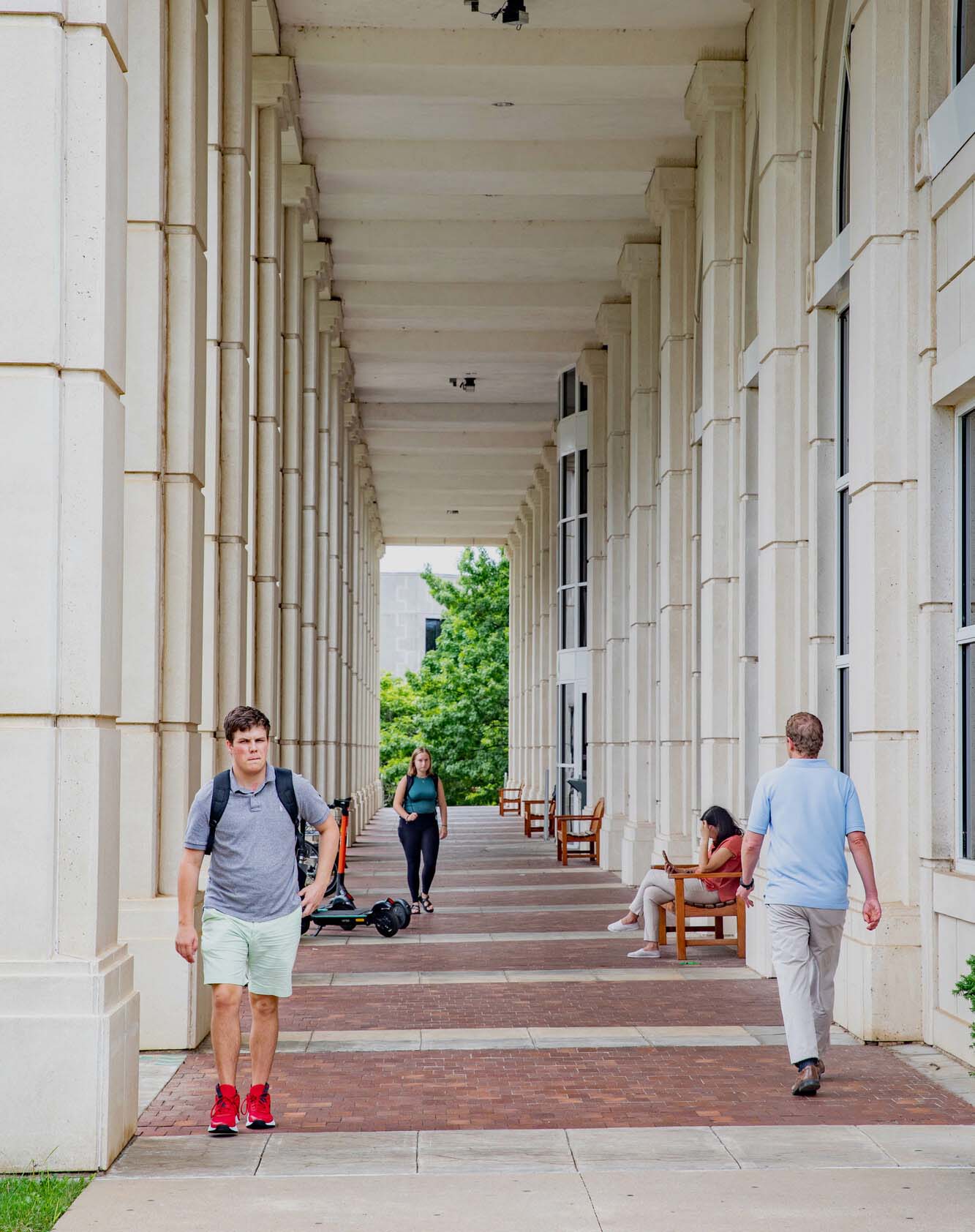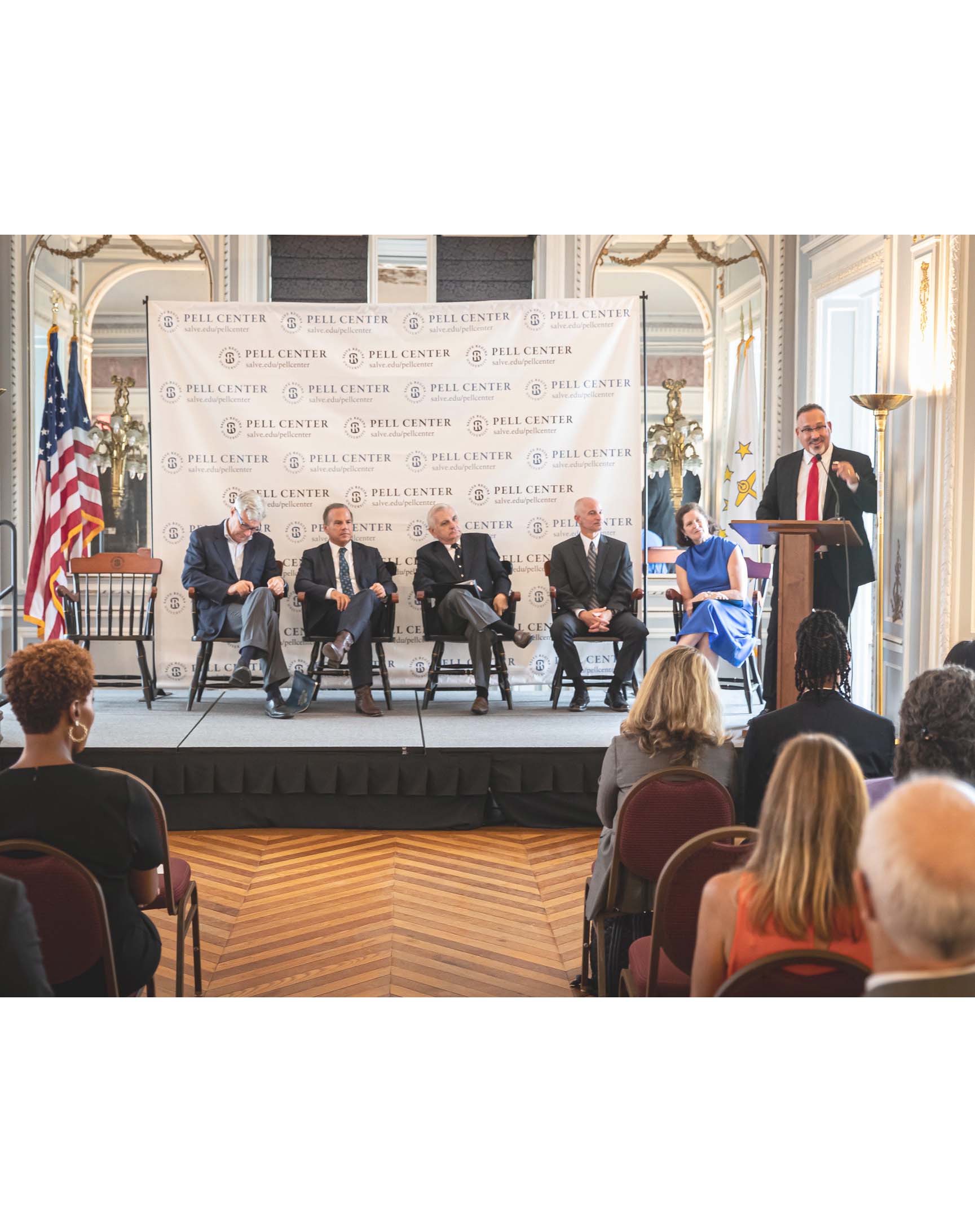Student Loan Bubble President Biden’s plan to cancel student loan debt sparks fierce debate over “forgiveness” policy
September 12-18, 2022
By Wesley Brown
President Joe Biden’s three-part plan to cancel up to $20,000 in student loan debt for nearly 27 million borrowers has set off fierce debate across the nation over the merits of the initiative that could cost taxpayers between $300-$500 billion.
On Aug. 24, after several months of anticipation to provide relief to millions of low- and middle-class debtors stuck with interest-laden student loan payments, President Biden issued an executive order that allowed him to fulfill campaign promises that helped him win the White House in 2020.
According to Biden, his plan provides breathing room to many families as they prepare to start repaying loans after the economic crisis brought on by the COVID-19 pandemic. According to White House officials, the total cost of both four-year public and four-year private colleges has nearly tripled since 1980, even after accounting for inflation.
At the same time, federal support has not kept up as tuition at most colleges and universities has continued to rise. According to data from the U.S. Department of Education, Pell Grants once covered nearly 80% of the cost of a four-year public college degree for students from working families, but now only cover a third.
That has left many students from low- and middle-income families with no choice but to borrow if they want to get a degree. According to a Department of Education analysis, the typical undergraduate student with loans now graduates with nearly $25,000 in debt.
In making the case for the student loan debt relief plan, Biden said the ticket for a college education has become too expensive for too many Americans.
“All of this means an entire generation is now saddled with unsustainable debt in exchange for an attempt, at least, at a college degree. The burden is so heavy that even if you graduate, you may not have access to the middle-class life that the college degree once provided,” Biden said in a statement. “Many people can’t qualify for a mortgage to buy a home because the debt they continue to carry. They can’t come up with a down payment anyway.”
Biden also noted that many former student loan borrowers are putting off starting families or postponing beginning a new business because of past college debt. He added the looming financial burden has especially impacted Black and Hispanic students that in many cases are first-generation college students.
“About a third of the borrowers have debt but no degree and — worst of both worlds: debt and no degree,” said Biden. “The burden is especially heavy on Black and Hispanic borrowers, who on average have less family wealth to pay for it. They don’t own their homes to borrow against to be able to pay for college. And the pandemic only made things worse.”
Under Biden’s plan, the U.S. Department of Education has immediately begun working with student loan borrowers to take advantage of the debt relief program. Since COVID-19 was declared a global pandemic in March 2022, former President Donald Trump and Biden both extended the student loan repayment pause a number of times. Accordingly, no one with a federally held loan has had to pay a single dollar in loan payments since President Biden took office.
To ensure a smooth transition to repayment and prevent unnecessary defaults, the first stage of the Biden administration’s initiative will extend the pause a final time through the end of 2022 with payments resuming in January 2023.
The second part of the initiative, which has received the most attention, will charge the U.S. Department of Education to provide up to $20,000 in debt cancellation to Pell Grant recipients with loans held by the federal government, and up to $10,000 in debt cancellation to non-Pell Grant recipients. Borrowers are eligible for this relief if their individual income is less than $125,000 or $250,000 for households.
In addition, borrowers who are employed by nonprofits, the military, or federal, state, tribal or local government may be eligible to have all their student loans forgiven through the Public Service Loan Forgiveness (PSLF) program. These temporary changes expire on Oct. 31.
The third part of Biden’s plans includes a proposed rule to create a new income-driven repayment plan that will substantially reduce future monthly payments for lower- and middle-income borrowers. The proposed rule would protect more income from loan payments. It would cut in half — from 10% to 5% of discretionary income — the amount borrowers must pay each month on their undergraduate loans. In contrast, borrowers with both undergraduate and graduate loans will pay a weighted average rate.
The new initiative would also raise the amount of income that is considered nondiscretionary income and therefore protected from repayment. The rule would also forgive loan balances after 10 years of payments, instead of the current 20 years under many income-driven repayment plans, for borrowers with original loan balances of $12,000 or less.
Additionally, the proposed rule would fully cover the borrower’s unpaid monthly interest, so that — unlike with current income-driven repayment plans — a borrower’s loan balance will not grow so long as they are making their required monthly payments. The plan would also simplify borrowers’ choices among loan repayment plans. The proposed regulations will be published in the coming days on the Federal Register and the public is invited to comment on the draft rule for 30 days.
“Earning a college degree or certificate should give every person in America a leg up in securing a bright future. But for too many people, student loan debt has hindered their ability to achieve their dreams — including buying a home, starting a business or providing for their family. Getting an education should set us free; not strap us down! That’s why, since Day One, the Biden-Harris administration has worked to fix broken federal student aid programs and deliver unprecedented relief to borrowers,” said U.S. Secretary of Education Miguel Cardona. “Today, we’re delivering targeted relief that will help ensure borrowers are not placed in a worse position financially because of the pandemic and restore trust in a system that should be creating opportunity, not a debt trap.”
Arkansas student loan questions
Despite strong party support and high consumer interest in the new initiative, Republicans and some conservative Democrats are raising questions about the program’s total costs, who will benefit the most, and how it will impact ongoing inflation. Others, including Arkansas Sen. Tom Cotton of Little Rock have questioned whether the president has the legal authority to implement student loan forgiveness.
“There is no such thing as student loan forgiveness — this is a bailout, paid for by the large majority of Americans who never went to college or who responsibly paid off their debts,” Cotton said in an Aug. 24 statement. “Even worse, President Biden’s plan ignores the true culprit: bloated, self-serving colleges. I’ll be introducing a bill to hold these colleges accountable for debt, lower tuition, support non-college career paths and save the taxpayers billions.”
In response to GOP attacks, President Biden and other Democrats have struck back at critics of the student debt forgiveness policy by criticizing bailouts to billionaires, lawmakers and top corporations under the Paycheck Protection Program (PPP). That program, which costs taxpayers over $1 trillion, was intended to aid small business owners impacted by the COVID-19 pandemic, but a U.S. Small Business Administration watchdog has estimated that $76 billion in PPP loan funds were taken illegally.
Meanwhile, there are nearly 350,000 student loan borrowers in Arkansas that would qualify for debt relief under the revamped federal program. The tally of Arkansas students that qualify for the revamped U.S. Department of Education initiative amounts to between $2.5 billion and $3 billion, estimates Tony Williams, director of the state Student Loan Authority (ASLA).
“This is significant but we also estimate that over $10 billion in student loan debt will remain with Arkansas citizens after forgiveness is granted,” said Williams, adding “we have received numerous calls but we’re limited in the amount of guidance we can provide to borrowers at this point. There are still questions about the forgiveness process.”
Williams said the U.S. Department of Education will make a forgiveness application form available in October and is encouraging borrowers to immediately complete the form so debt cancellation can be granted before the loans re-enter repayment status. He also said there are still questions about privately held FFELP loans and what must be done for those borrowers to receive forgiveness. “ASLA holds over $100 million in FFELP loans so we are very interested in how the process will take place for these borrowers,” he said.
According to data compiled by ASLA before the pandemic, collegegoers attending the University of Arkansas at Fayetteville (UAF) received the largest portion of federal student loan proceeds in Arkansas, noting $108.5 million was handed out to enrollees at the state’s flagship university in 2019. They year, UAF and other colleges across the state are seeing record enrollment.
Also, the Tax Foundation, the influential conservative Washington, D.C.-based think tank, said the Biden administration’s student loan forgiveness plan would make inflation worse by increasing the deficit by more than $350 billion, fully offsetting all the deficit reduction resulting from the Inflation Reduction Act signed into law on Aug. 16.
“The President’s debt forgiveness plan is certainly beneficial to some, but it would add to the national debt and worsen inflation. In addition, it sets a new precedent and expectation for further debt forgiveness, which would further increase the national debt and inflation. It may also push tuition prices higher, as more students treat loans essentially as grants,” stated the Tax Foundation.
Regarding the tax treatment, the Tax Foundation warned policymakers must weigh the benefit of expanding tax exemptions for forgiven student loan debt against the complexities created in the tax base if lenders get write-offs and borrowers get exclusions. From the standpoint of tax simplicity, the rules regarding the tax treatment of forgiven loans should be consistent and broadly applied, rather than fragmented.
According to an analysis by the conservative tax policy group that co-authored a plan with the University of Central Arkansas’ Center for Research in Economics to overhaul the state’s tax code that became a blueprint for Gov. Asa Hutchinson’s tax cut policy, Arkansas is among a list of several states that could possibly tax any student loan forgiveness proceeds.
“One of a handful of states which does not conform to the Internal Revenue Code in any significant way, Arkansas’ tax code is silent on the treatment of student loan debt forgiveness, and the ordinary rule — that a discharge of indebtedness constitutes taxable income — should prevail absent state action,” wrote Tax Foundation analyst Jared Walczak on Aug. 25. Walczak is vice president of state projects for the foundation’s Center for State Tax Policy.
Nationally, the Federal Reserve Bank of New York’s Center for Microeconomic Data issued its highly watched Quarterly Report on Household Debt and Credit on Aug. 2, showing the nation’s student loan bubble remained flat through the first half of 2022.
Through the end of June, outstanding student loan debt stood at $1.59 trillion, roughly unchanged from the year’s first three months. Concerning the student loan balance, Federal Reserve economists said about 5% of aggregate student debt was 90-plus days delinquent or in default in the second quarter. The lower level of student debt delinquency reflects a Department of Education decision to report current status on loans eligible for COVID-19 related forbearances.
Concerning the overall economy, the quarterly report shows an increase in total household debt in the second quarter of 2022, increasing by $312 billion or 2% to $16.15 trillion. Balances now stand $2 trillion higher than at the end of 2019, before the COVID-19 pandemic. The report is based on data from the New York Fed’s nationally representative Consumer Credit Panel.
Overall, mortgage balances rose by $207 billion in the second quarter of 2022 and stood at $11.39 trillion at the end of June. Credit card balances also increased by $46 billion. Although seasonal patterns typically include an increase in the second quarter, the 13% cumulative increase in credit card balances since Q2 2021 represents the largest in more than 20 years. Auto loan balances increased by a solid $33 billion in the second quarter, while other balances — which includes retail cards and other consumer loans — increased by a robust $25 billion.
The Federal Reserve reported that non-housing balances grew by $103 billion, the largest increase since 2016. What that means for many student loan borrowers, is that the debt relief could not have come at a better time.
“The second quarter of 2022 showed robust increases in mortgage, auto loan and credit card balances, driven in part by rising prices,” said Joelle Scally, administrator of the New York Fed’s Center for Microeconomic Data. “While household balance sheets overall appear to be in a strong position, we are seeing rising delinquencies among subprime and low-income borrowers with rates approaching pre-pandemic levels.”
Photo Caption:
1. Three-phase plan for student loan forgiveness would offer up to $20,000 for 27 million Americans, 350,000 in Arkansas
2. As Arkansas were headed back to school in late August, the Biden administration made the surprise announcement that the U.S. Department of Education will oversee efforts to cancel up to $20,000 in student loan debt for nearly 27 million borrowers. According to Arkansas Student Loan Authority estimates, close to $3 billion in student loan debt will be forgiven for approximately 350,000 Arkansans over the next 12 months. This is significant but we also estimate that over $10 billion in student loan debt will remain with Arkansas citizens after forgiveness is granted. Photo by Chieko Hara, University of Arkansas-Fayetteville - University Relations
3. U.S. Department of Education Secretary Miguel Cardona (far right) speaks at a conference earlier last month at the Pell Center in Newport, R.I., commemorating the 50th anniversary of the federal Pell Grants. The center and the federal grant program that provided a path to paying for higher education for over 80 million Americans is named after for U.S. Senator Claiborne Pell. Under the president's controversial executive forgiving billions of dollars in student loan debt, up to $20,000 of past due Pell Grant debt will be erased.
4. For the second straight year, the University of Arkansas-Fayetteville is welcoming a record student body to its campus as enrollment tops 30,000 for the first time, with more than 7,000 degree-seeking new freshmen for the 2022-23 academic year and setting records for the number of Arkansans enrolled as well as in the incoming class. Photo by Chieko Hara, University of Arkansas-Fayetteville - University Relations






